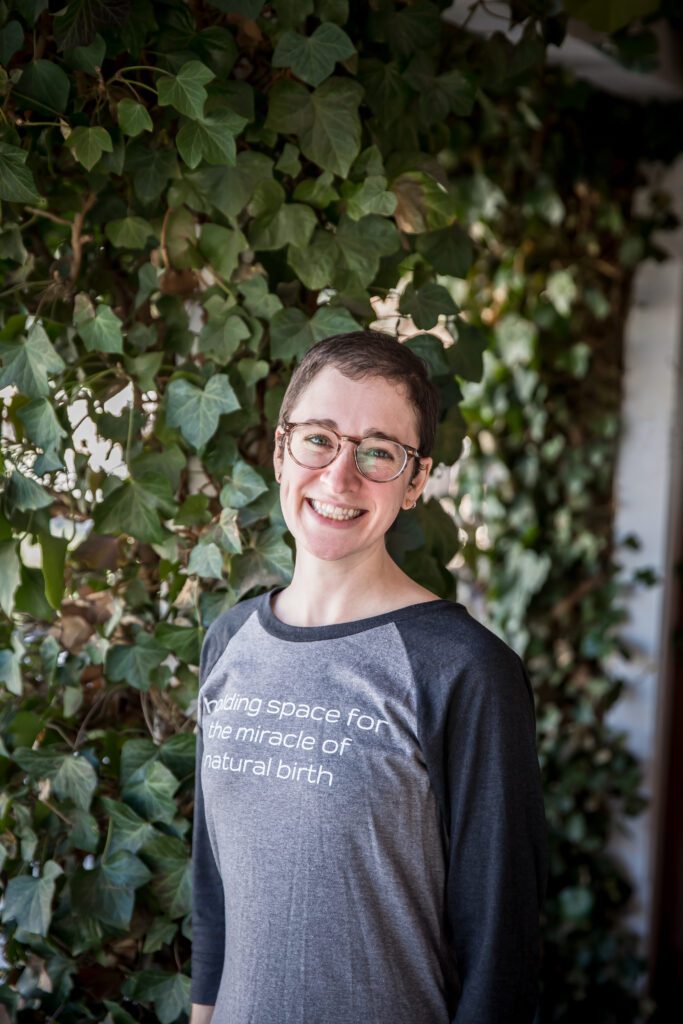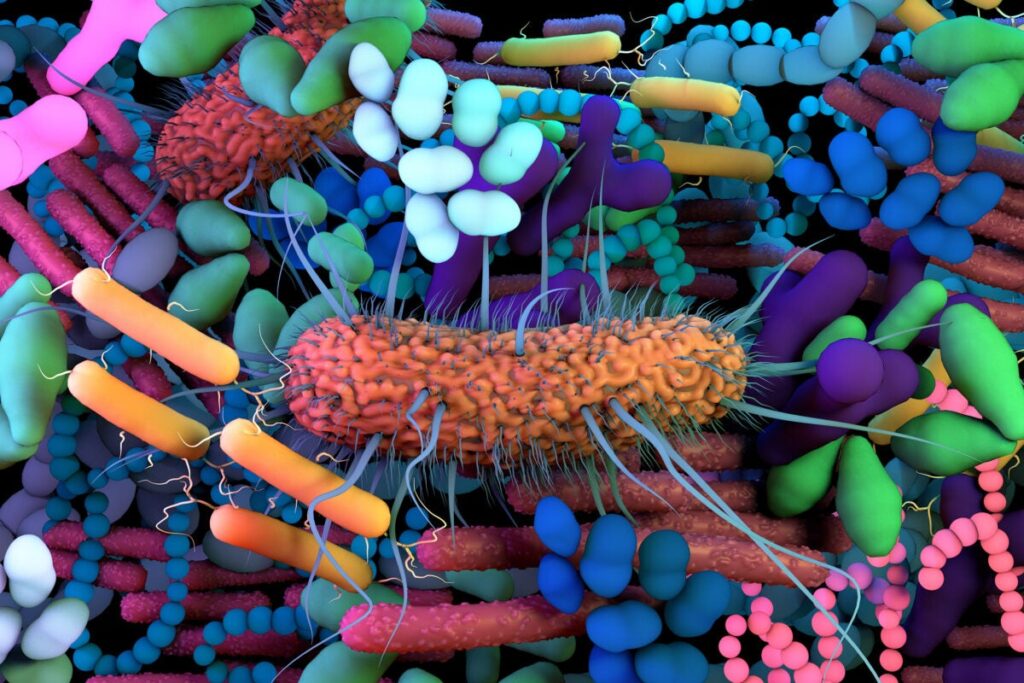Eating for Two: Nourishing Yourself and Your Microbiome
by Meagan Morse, CNM
We’ve all heard the sayings, “your gut feeling,” and “trust your gut.” It’s ancient wisdom that our tummies are wise. Now, with emerging research on the gut microbiome, we’re learning just how true that is! We’re also learning how we can support our health by supporting a healthy microbiome. Read on for some interesting knowledge and good steps to take, plus some great recipes and resources!
What is the microbiome?
“Microbiome” is the name for all the bacteria, fungi, protozoa, and viruses that live on and inside our bodies. Incredibly, our bodies are as much microbe as they are human on a cell-for-cell basis — there are as many bacterial cells in our body as there are human cells!1
While we often think of the ways that bacteria and viruses can make us sick, a healthy microbiome actually has a symbiotic relationship with our bodies that allows human and microbe to contribute to each other’s well-being. The microbes of our microbiome live on the skin, all along the digestive tract, and in the vagina. While each part of this complex system is important, for the rest of this article we’ll be focusing on the gut.
Why is the gut microbiome important to health?
We are just beginning to understand all the ways our gut microbiome shapes our health, and researchers learn more each day. In another 10 years, imagine how many other human-microbe interactions will be added to this list!
For now, here is what we know:
- The gut microbiome supports our immune system. It is one of the first lines of defense against harmful bacteria entering our body through our mouths. It prevents bacteria from infecting us by (1) competing for resources, (2) activating our immune system, and (3) directly killing harmful bacteria.
- Researchers have also noticed trends in the make-up of the microbiomes of people with a variety of autoimmune diseases, which suggests that the microbiome may play a role in preventing or triggering autoimmune disease.2, 3
- The gut microbiome takes the food we eat and makes vitamins that our body can use, including B12 (cobalamin), B2 (riboflavin), B1 (thiamine), B9 (folate), and vitamin K.4 It also influences the absorption of minerals like calcium and magnesium.5
- The gut microbiome produces neurochemicals, including norepinephrine, dopamine, acetylcholine, and melatonin. It also produces a whopping 95% of our serotonin! These chemicals communicate with our whole body, including our brain; this impacts learning, memory, mood, pain perception, and beyond.6, 7
How can we nourish our microbiome?
We can think of our bodies like a garden, or an ecosystem. How do we tend to this garden? Two strategies are eating prebiotics and eating probiotics.
Prebiotics: These are specific plant fibers that our bodies can’t digest, but the healthy bacteria in our guts can use them to support their own growth and activity, while providing our body with helpful molecules as byproducts. Aim for a variety of these prebiotic foods every day. Fruits vegetables, nuts and legumes are the main categories here.
Prebiotic foods include: garlic, onions, leeks, avocados, oats, seaweed, jicama, asparagus, bananas, apples, lentils, beans, chickpeas, berries, flaxseed, and chia seeds.8
Probiotics: These are the bacteria and yeasts themselves. When taken in food or supplement form, they can help maintain and contribute to your healthy gut microbiome. There are many probiotic supplements out there, and each year there is more research exploring the role of probiotics supplements in treating a variety of conditions, from bacterial vaginosis to eczema to constipation. If you are curious about how probiotic supplements might support your health, chat with your midwife.
A great way to get probiotics into your diet on a daily basis is through fermented foods. This is where ancient wisdom comes back into play — cultures around the world have been fermenting foods for thousands of years! Think: curtido, kimchi, pickles, sauerkraut, yogurt, kefir, and miso. Fermented foods are nutritionally dense, have a far greater concentration of probiotic bacteria than probiotic supplements do, and may be easier to digest than the raw forms of the foods. The key is that fermented foods need to be lacto-fermented, a process in which healthy bacteria feed on the sugars in the food, producing lactic acid, which preserves the food. If you’re looking for fermented foods at your local grocery store, you’ll find ones like yogurt, kefir, and miso. You may also find pickles, sauerkraut, kimchi, and curtido. To know whether these vegetables were truly lacto-fermented, you need to check the ingredient list. Fermented vegetables will NOT have vinegar on the ingredient list. Vinegar can be used for quick pickling, which is a strategy that preserves and flavors vegetables, but does not ferment them.
You can also make fermented foods yourself. To me, fermenting foods at home is a kind of kitchen magic — you take some vegetables, add some salt water and spices plus the tincture of time, and a few weeks later, you get a totally different food with fascinating flavors! Fermenting is also a great way to preserve extra summer and fall vegetables for the winter. One of my favorite books on fermentation is “Wild Fermentation” by Sandor Katz. If you’re looking into home fermentation for the first time, I can’t recommend this book highly enough. It will walk you through the process from start to finish and help you problem-solve around potential pitfalls (like how to prevent your fermented foods from growing the wrong kind of organism: mold!)
I’d also love to share with you a few of my favorite fermenting recipes:
Sour Pickles (from Wild Fermentation)
Fermented Veggie Sticks (kids love them)
Basic Sauerkraut Recipe (with lots of flavor variations)
Honey Garlic Cloves (one of my favorite winter remedies)
Fermented Ginger Carrots (sweet and a little spicy)
A basic fermentation video from the author of Wild Fermentation
Happy fermenting!
References
(1) https://pubmed.ncbi.nlm.nih.gov/27541692/
(2) https://www.nature.com/articles/s41564-018-0278-4
(3) https://www.nature.com/articles/d41586-020-00197-z
(4) https://www.ncbi.nlm.nih.gov/pmc/articles/PMC3144392/
(5) https://academic.oup.com/jcem/article/102/10/3635/4036354
(6) https://www.apa.org/monitor/2012/09/gut-feeling
(7) https://pubmed.ncbi.nlm.nih.gov/27491067/
(8) https://www.monash.edu/medicine/ccs/gastroenterology/prebiotic/faq#3

Meagan grew up outside Washington, DC and studied the history of medicine in college, focusing on gender and racial justice. In the years that followed, her love for midwifery grew while working as a sexual health educator and full-spectrum doula. In 2017, she began training as a student midwife at the birth center Maternidad La Luz in El Paso, TX, providing care mostly in Spanish. Meagan’s studies continued at the University of California San Francisco, and she graduated in 2020 with a Master’s degree in Midwifery and Women’s Health.
Meagan is committed to building a healthcare system that addresses health disparities faced by marginalized communities and is inclusive of all people and families. She is also a member of the American College of Nurse Midwives Transgender Care Working Group, and facilitates a virtual support group for LGBTQIA+ families from preconception through parenting.
She and her partner live in Albuquerque, where they enjoy hiking, gardening, and spending time with their pet cockatiels, Sweetcheeks and Moe.




